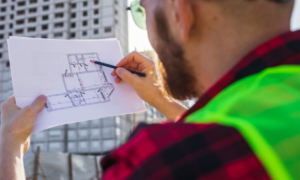With advancements in technology and a growing focus on sustainability, the way we move from point A to point B is undergoing a revolutionary transformation. From smart vehicles to interconnected infrastructure, here are 10 trailblazing trends that are redefining connected transportation technology.
Autonomous Vehicles:
Driving Towards the Future
Autonomous vehicles, once a futuristic concept, are now a reality. These self-driving cars utilize cutting-edge technology such as sensors, cameras, and artificial intelligence to navigate roads safely and efficiently. Companies like Tesla, Waymo, and Uber are leading the charge in this groundbreaking field, with predictions suggesting that autonomous vehicles will dominate the roads in the coming years.
Electric Mobility:
A Greener Way Forward
The shift towards electric mobility is revolutionizing the automotive industry. With concerns over climate change and air pollution on the rise, electric vehicles (EVs) offer a sustainable alternative to traditional gasoline-powered cars. Major car manufacturers are investing heavily in electric vehicle technology, with advancements in battery technology driving down costs and improving performance.
Connected Infrastructure:
Paving the Way for Smart Cities
Connected infrastructure is transforming urban landscapes into smart cities of the future. From intelligent traffic lights to smart parking systems, these interconnected technologies are optimizing traffic flow, reducing congestion, and enhancing safety on the roads. With the rise of the Internet of Things (IoT), cities are becoming more efficient and sustainable than ever before.
Shared Mobility:
Rethinking Transportation Services
Shared mobility services such as ride-sharing, bike-sharing, and scooter-sharing are changing the way people think about transportation. Instead of owning a car, many urban dwellers are opting for on-demand mobility solutions that offer convenience and flexibility at a fraction of the cost. Companies like Lyft, Uber, and Lime are leading the way in this rapidly growing industry.
Hyperloop:
The Future of High-Speed Transportation
The Hyperloop is a revolutionary mode of transportation that promises to transport passengers and cargo at near-supersonic speeds. This futuristic concept, first proposed by Elon Musk in 2013, involves propelling pods through a low-pressure tube using magnetic levitation technology. With several Hyperloop projects underway around the world, this innovative transportation system could soon become a reality.
Advanced Driver Assistance Systems (ADAS):
Enhancing Safety on the Roads
Advanced Driver Assistance Systems (ADAS) are becoming increasingly common in modern vehicles, helping drivers stay safe on the roads. These systems use sensors and cameras to detect potential hazards and assist with tasks such as lane-keeping, adaptive cruise control, and automatic emergency braking. As technology continues to advance, ADAS will play a crucial role in reducing accidents and saving lives.
Vehicle-to-Everything (V2X) Communication:
Enabling Seamless Connectivity
Vehicle-to-Everything (V2X) communication is revolutionizing the way vehicles interact with their surroundings. By allowing cars to communicate with each other, as well as with infrastructure such as traffic lights and road signs, V2X technology enables safer, more efficient transportation systems. With the rollout of 5G networks, V2X communication is poised to become even more widespread in the coming years.
Augmented Reality (AR) Navigation:
Transforming the Driving Experience
Augmented Reality (AR) navigation systems are changing the way drivers navigate unfamiliar routes. By overlaying digital information onto the real world, AR navigation systems provide intuitive guidance, helping drivers reach their destinations more easily and safely. Companies like Google and Apple are integrating AR technology into their mapping apps, offering users a more immersive navigation experience.
Urban Air Mobility (UAM):
Taking to the Skies
Urban Air Mobility (UAM) is a burgeoning field that aims to revolutionize urban transportation by introducing flying vehicles such as drones and air taxis. With advancements in electric propulsion and autonomous flight technology, UAM promises to alleviate traffic congestion and reduce travel times in crowded cities. Companies like Uber Elevate and Volocopter are leading the charge in this exciting new frontier.
Blockchain in Transportation:
Securing the Future of Mobility
Blockchain technology is making waves in the transportation industry, offering secure and transparent solutions for everything from vehicle ownership to supply chain management. Additionally, by leveraging decentralized ledgers, blockchain enables tamper-proof record-keeping and secure transactions, reducing the risk of fraud and enhancing trust in the transportation ecosystem. As blockchain continues to evolve, its potential to transform the future of mobility is virtually limitless.
Conclusion
The future of transportation is bright, with innovative technologies reshaping the way we move and interact with our environment. From autonomous vehicles to urban air mobility, these trailblazing trends are paving the way for a more connected, efficient, and sustainable transportation system. Thus, as we embrace these advancements, we can look forward to a future where getting from point A to point B is not only easier but also safer and more enjoyable than ever before.


































